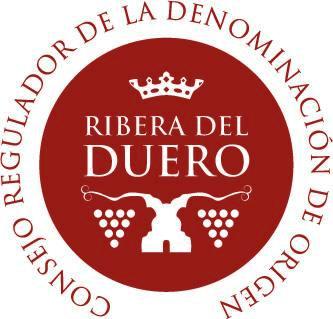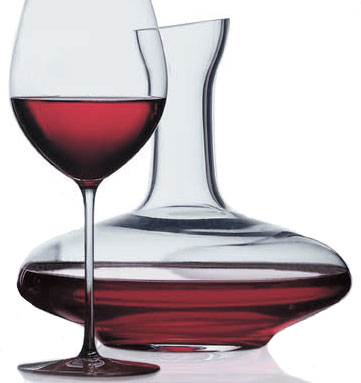Designation of origin Ribera del Duero
The beginnings of Ribera del Duero

The DO Ribera del Duero is one of the most popular designations of origin in Spanish wines. The Ribera del Duero region is so perfect for wine making that its history can be traced very far back. The first reference to wine making in this area comes from the Phoenicians, who started producing wine about 1000 b.C. When the Iberic Peninsula became part of the Roman Empire (under the name Hispania), the Romans started producing wine in great volume. The wines obtained from the Ribera del Duero area was sent to the troops out in the front to boost their morale for fighting. From this time is the huge mosaic of Bacchus discovered in the mid 1900s, which is the biggest and best kept rendition of Bacchus in the whole of the Peninsula.

In the 10th and 11th centuries the real consolidation of the Ribera del Duero wines occurred with the arrival of the monks. After the battles of the Reconquest to win the Peninsula back from the Muslims, the battlefields became vast desertic plains. The Spanish course of action was to repopulate these areas, so the Cluny monks that arrived from France during the 12th century established their monasteries in these regions, where they started to produce their own wine and spread their more advanced wine making customs. This resulted so well that by the end of the 13th century, harvesting was being controlled to let the grape ripe to its prime state. It was also during this period that the first underground cellars were built, which are a must-see if you want a complete cultural Spanish immersion
With the 15th century came the "Ordenanza de Castilla" (Castilian bylaws) which regulated the production, quality and exportation of Castilian wines. This was the first step to the establishment of the designation of origin many centuries later, in 1982
The making of a great wine

In the second half of the 19th century, the Lecanda family built a wine cellar right by the Duero river, where they planted vines that were not native to the region, like Cabernet Sauvignon, Merlot and Malbec. The wines produced by the Lecanda family were much better than the coarse, rural wines produced by the nearby wine makers who had little resources, and they soon gained a name for themselves. These wines, known as Vega Sicilia, are still today a synonym of quality, and anyone learning Spanish culture will be familiar with them. But good things never last long, and with the phylloxera plague at the end of the 1800s came the downfall of Vega Sicilia.
In the 1970s Alejandro Fernández founded another winery, Pesquera del Duero, and produced a reserva (wine that's been aged for more than 36 months in cask and bottle) that amazed wine lovers all around the world. The first Pesquera wines were strong and full bodied, and Alejandro Fernández perfected his technique to obtain the more delicate wines that have made his Pesquera del Duero famous. The wine region Ribera del Duero obtained its own designation of origin in 1982 thanks to the constant work from both big and small wineries which were determined to get their hard work recognized.
Ribera del Duero in modern Spain
This DO has its vineyards in the meeting point of Burgos, Soria, Segovia and Valladolid. The Duero river passes through here forming the Duero valley, in which many of its tributaries spill their waters, and this makes for an abrupt and varied relief. The climate is continental, which means long, hard winters with frequent freezes but not much rain, and hot, dry summers. This area is perfect for someone visiting Spain and wanting to learn Spanish traditions, specially about wine.
The grape varieties allowed are mostly reds: Tempranillo, Cabernet Sauvignon, Merlot, Malbec and Garnacha Tinta. Only the Albillo variety is accepted for white grapes. DO Ribera del Duero produces reds and rosés. The classification is as follows:

Reds: Must be produced with at least a 75% of Tempranillo. When combined with another red grape (Cabernet Sauvignon, Merlot, or Malbec) the mix shouldn't compose less than 95% of the wine. Albillo and Garnacha Tinta shouldn't be used for more than 5% of the wine. Reds from DO Ribera del Duero must have a minimum alcohol content of 11.5% and come in three varieties:
- Young reds: No aging in wood and less than 12 months in casks. They reach the market a few months after harvest.
- Crianza: At least 12 months spent in oak casks. Can't reach the market until at least 2 years after harvest.
- Reserva: 36 months of aging with at least 12 spent in the cask. Can't reach the market until at least 3 years after harvest.
- Gran Reserva: Aged for 60 months, out of which at least 24 have to be in cask, and the rest in the bottle. Can't reach the market until at least 5 years after the harvest.
Rosé: The grapes are fermented without their skins and the wines can be enjoyed shortly after the harvest. Must have a minimum alcohol content of 11%.
Spanish Wine History
Spanish Wine Regions and DO
Spanish Wine Tours
Top Spanish designations of origin
Best Spanish Wines
Spanish Wine Production
Spanish Wine Types
Spanish Grapes
Spanish Sparkling Wine: Cava
Sherry Wine
Spanish Wine Cocktails
Spanish Wines in the World
Spanish Wine Prizes
Enotourism
Spanish spirits and liquors
Argentina Wines
Chilean Wines
Other sites